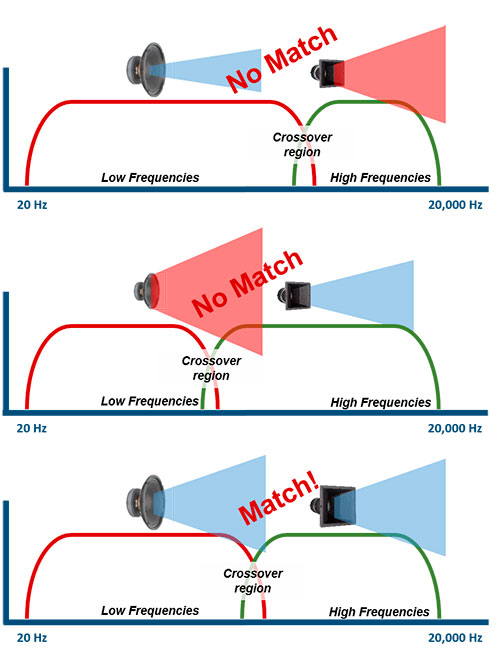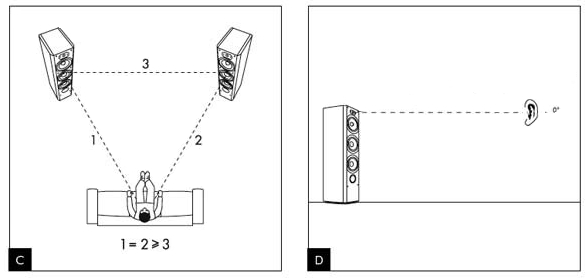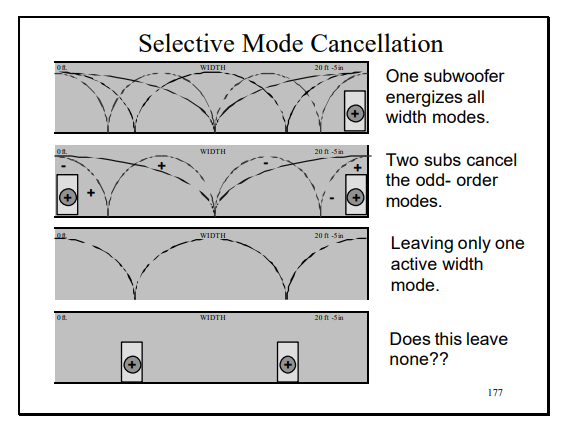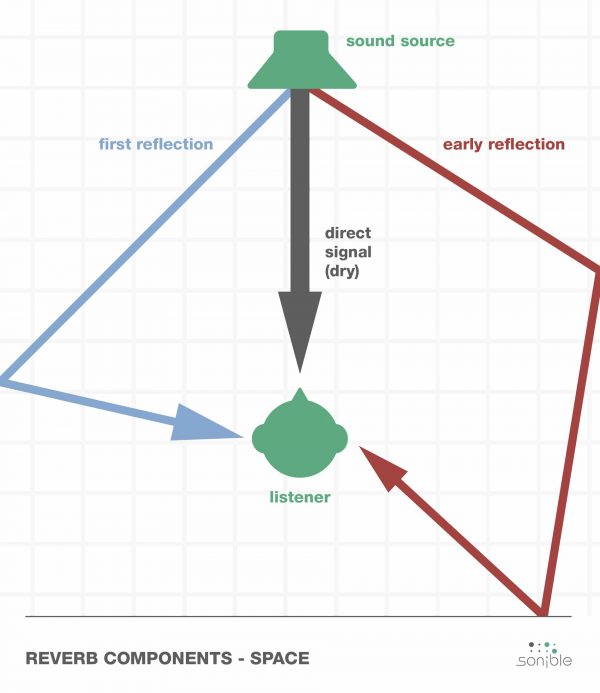How to implement my horn and my speaker
Acoustic Basics summary
Energy is not free so when we ask a compression driver to be constant in directivity in a horn, the on axis response will always have a form of bell, needing EQ with DSP.
The implementation of a speaker is not done in function of the room, The entire speaker must be flat on-axis at close distance (around 60cm).
Then the air absorption, the room will apply an effect of decay, this decay must NOT be corrected at listening position, never.
Rooms mods below 100hz, taking account of an area of listening and not at one precise position, can be EQ but nothing more.
FIR & IIR
A FIR filter can do minimum and linear phase filtering, a IIR can only do minimum phase filtering
Linear phase filtering (allowed by FIR DSP with Taps, costly in CPU resources) doesn’t touch the phase so it’s good for crossover but not for frequency correction as we want to modify the phase also when we do a frequency response correction.
When you do a cut with it the easier way to do it is to EQ it flat 1 octave after the cut with Minimum phase filtering for correct phase and response then apply a Linear Phase Filtering on it.
Minimum phase filtering (allowed by IIR DSP) modifies the phase so is very adapted to frequency response correction. In this case we will in most cases try to combine the acoustic natural fall-off with our DSP electric cutoff, see subwoofer par for example.
As the center of emission isn’t at the same depth we will need to put delay on the woofer in most cases to have in-phase response and no cancellation at X-over.
The more brutal is the cut the more a very precise delay is important between components so be very careful with this and follow the article for it, if delay is perfect the LR150db in FIR after a IIR linearization 1 octave below the cut for the compression driver, 1 octave upper for the woofer, is the best.
All steps have to be done in the correct order we will need REW and a mic :
1. The horn with my DSP
Choose where you will cut, you can ask us but basically it’s when the horn starts to lose control but still has SPL in his low end region.
The directivity of two elements cut together must have similar directivity at the common crossover frequency.
The distance between each acoustic center crossed together should be, inferior or not to far from 66% of the frequency wavelength but in fact it’s also relative to your listening distance, farest you are the less it’s a problem.

Then it’s very important that the coverage match at frequency and that the woofer is as close as possible to the horn.
But, if we measure in perfect situation (anechoic chamber) or simulate it, we will see that it’s never perfectly the case in terms of directivity maching. It’s in fact the crossover slope associated with perfectly align delays that will do a perfect transition until woofer coverage and horn coverage, the transition is not a problem, she just must to not be accidented (on and off axis) or too abrupt. It’s why we must cut where the woofer loose his directivity and become narrowing and where the horn begin to be no more directive.
Prioritising perfect match until 20kHz (like 120° until 18/20kHz) on the depends of coverage adapted to listening distance (and distortion when the woofer is cut too high), is a common mistake nowaday and is in complet opposition to acoustics basics laws and psycko-acoustic studies.
If people mainly listen sit-down , the center of the horn should be around the ears position, so 94 / 96cm from the floor.
Measure the horn at 60cm for taking account of all his form but not the room, you can windows the response before the first accident see on impulse response for the most advanced of peoples.
EQ it flat in minimum phase filtering, not in linear phase, from the fall bottom to the breakup.
Sometimes the breakup is so present that it’s not possible to EQ flat until 20kHz, in this case do it flat until 14kHz, it’s not necessary to “excite” a diaphragm breakup.
Add a cut in linear phase or minimum phase filtering with your DSP, the cut you add is an electric cut, with the addition of the natural fall of the horn it will have a stronger acoustical cut. The cut in real life will be a sum of the cut in the DSP plus the natural fall of the horn.
For advanced peoples: You can add with REW a target curve to see for example that adding a Butt 12 on a natural fall can result in an acoustic LR24, it’s just an example.
2. The woofer
Basically do the same, EQ at 60cm in front of him (so change the height position of your mic).
important : Put your woofer as close as possible to the horn to reduce vertical center to center distance, the ideal distance is below 66% of cross-over Lambda (Lambda : wavelength of a frequency) and keeping horn center at ears position height, generally at 94/96 cm sit-down. Otherwise you will have vertical lobs (seen in Xdir free software)
If your woofer response is rising up in the box, and only in thi case, you can linearize him by adding a simple air core inductor in serie on “+” of the woofer, it will lower the H3 by reaction with the motor. It doesn’t work if the woofer have AIC (Active Impedance Control, from 18Sound) or already damped breakup.
It’s one of the best tricks in the active filtering system and is explained here: Speaker Break-Up and associated distortion. The self is around 1.2/1.7 mH, then does a precise EQ at 60cm, as usual we can say.
Cross it at the same frequency of the horn.
Be careful to not have reversed the phase (+ and -), you can check it by reverting on purpose, measuring and see that there is a cancellation at cross-over.
For brace and stuffing you can follow our guide : braces and stuffing
3. Find the delay between horn and woofer
There is several way to do it, we will talk about the simplest, advanced user can look how to do it with the sound card Loopback method but the result is in fact the same.
In your DSP configuration, voluntarily add 10ms on the compression driver to “move” his impulse pick further.
Put your mic at 1m50 at an average height between horn and woofer and basically align SPL level (we will do it precisely in the next step for this) with elements crossed.
Remove any crossover but keep the frequency corrections, do a large sweep around desired crossover with both composants together.
For example from 300hz to 5kHz (if you let the sweep goes up it will be easier to see) if you want to cross around 700hz, not need to have a huge volume as there is no crossover, and we don’t want to break something as there is no crossover on the compression driver.
Look the impulse response on REW, you will see two impulse peaks, one at 0ms and another one around 10ms plus something, just remove the 10ms in DSP if the second peak is for example 10.25 ms that means that the delay must be 0.25ms (because 10.25 - 10 = 0.25)
So 0.25ms is the delay to apply to the woofer in this case.
Put the right delay in the DSP and don’t forget to put back the crossover on each element.
4. Align level
With only one speaker, put your mic at 1m50 of the speaker at the average height between horn and woofer (so he won’t move from step 3), in your DSP align dB level between the two components thanks to measurements iterations.
Affine it by step of 0.2 dB in stereo, with the two speakers, without use of your mic by listening at listening position, if the sound looks muffled add 0.2 dB and try again, if it looks light too bright then remove 0.2 dB. Why in stereo: when the two speakers will play at the same time some frequencies, the lower ones, will sum easier than the highest frequency, so it should be taken into account.
Do it after putting acoustic treatment, because it will lower energy in high frequencies, we generally can add 0.2dB more after adding a good acoustic treatment by absorption (see 7. Acoustic treatment).
Of course it makes sense only if you have done all the previous steps.
5. Speaker position
The acoustic center of the horn must be at the same height of your ears at your listening position.
So generally the acoustic center of the horn must be close to 94 or 96 cm height from the ground.
You must toe-in your speaker at your main listening position, like this :

You also should listen your speakers inside the Critical Distance area and don’t put your sitting position to close from the rear wall, let a gap at to at least 1m.
But, this triangle is an ideal, if you can have 3m/3.50m with 1/1.5M gap behind your listening position it will be better than just follow the theoretical triangle.
Following the ideal triangle must not be done on the depend of listening at critical distance.
Rear gap is important in any cases.
6. Subwoofer (optional)
Even if we have a FIR DSP, so linear phase filtering, we don’t use it here as it will be very costly in TAPS as the frequency is lower and useless about phase at this frequency. We will search to cut between 50 and 60 hz optimally.
Measure the delay in cm and convert it to ms if the subwoofer is far, be sure to not have a reversed phase as we said for the woofer, you can check it with the same techniques.
You can correct the woofer response at the listening area by doing several measures by moving the mic in the listening area, not at just one position.
Be carreful when you correct your subwoofer to not introduce masking effect.
You can add an electric (in DSP) Butt 12 on your natural woofer natural fall to have a real (acoustic) Butt 24 in minimum phase filtering, linear phase filtering is not necessary at these frequencies. Then add Butt 24 on the subwoofer.
Positioning Subwoofer
Subwoofer position can be hard, we want room gain but without room modes, but the first comme rarely without the second.
We should place subwoofer at 20% of each side wall on the speaker wall as here, if we have 4 subs we regroup it by pair:

The alternative of this is to put a line on sub horizontally on the ground, if possible integrated to the wall, completely from one side wall to the other, each subwoofer unit as close as possible from each other, it can require a lot of 18", it will allow to create a plane wave radiation subwoofer. It’s more technical and very expensive. It can be coupled (same chanel) with Divatech style wall of sub.
We have to choose, depending on our room and SPL max goal, between one or two 12",18",21":
If we prioritize max SPL we go for pro audio subwoofer, if we need flat responding subwoofer so non pro speaker as car audio.
If we place the subwoofer on the center of the room we will have less mods but also less room gain so a flat responding subwoofer will be better.
Generally, except very big room we search for flat responding subwoofer.
Here is a list of soms, for vented ones we will search a Qts between 0.33 and 0.36 and a low Fs :
Vented:
-
Max SPL and top notch thermal compression : 18Sound 21NTLW5000
-
Pro that go low : BMS 18N862 (180L@25hz), 18Sound 18NLS4000 (100L@28hz)
-
Pro with good quality price : RCF 21X451, B&C 21SW115
-
Non pro, go low flat : Dayton RSS315HO-4 (12"), RSS390HO-4 (15") RSS460HO-4 (18") or Stereo Integrity HST-18 MkIII (only available in USA for this last one)
Sealed:
- Dayton Ultimax UM12, UM15, UM18
- All Stereo Integrity (USA only)
7. Acoustic treatment
For this section we will start from the principle that we are in a regular room, a saloon, not a dedicated room or studio record.
We will avoid coupled volume, close doors are alway better to avoid to create a coupled volume.
A basic saloon is already very reverberant, so the first main focus is to absorb, not to diffuse.
The best place for absorption is the wall behind the speakers, it will bring 80% of what we need: lowering the room RT.
We will use melamine (BASF Basotect G+) or Woodrock (Rockfeu REI, it’s bi-density so put low density to the external side) on a big part of the wall, prioritizing exposed surfaces near angles. The treatment must be massive, at least 8/10cm deep on at least 50% of the wall, only absorption.
Then if we want to extend the lower bottom of the absorption we can add the same things on the wall rear the listening position.
Don’t put your sitting position right against the wall, let 1m ditance at least.
Then we can think on the side walls by an assembly of diffusing parts side by side with absorbing one. Don’t use a product that does “the two”: It gives a “V” shape absorbing response that we don’t want.
Deal with first or early reflection on side walls
The goal on the side is to play with ITDG (Initial Time Délai Gap) it’s, the time the early reflection comes to you.
The early reflection is the “first” reflection on a surface that will directly go from the speaker to your ears with only one or two rebound so they are close in time from the direct sound and can cause phantom image, dysmetria soundstage when the room is not symetrical and speakers close to side walls…

This reflection on walls should not be specular (aka not like a mirror) but diffuse, it’s why, in room and not in recording studio, we put side by side absorption and diffusion on sides. In a recording studio we will absorb everything as we want almost only direct field.
We need early reflection for the sound stage but not too much and not too close in time comparing to the direct field (so drive away speakers from side walls) or the tone quality will be degraded and a finger response will appear at medium/high frequencies.
Pinch the speakers as we said upper and use horns adapted to your listening distance will reduce the intensity of this early reflection.
The brain has a TPI (Time Period of Integration) when sound is fusionned, you will have more information about TPI here.
Warning
Do NOT correct or filter your speaker at the listening position except for the frequency correction in the subwoofer region (for mods) and even here be careful because a dip (a room cancellation) can be present at one place and disappear just 20cm aside… So it’s a logic of listening area, not an one place mic measuring.
Be careful of the reversed phase, check each element alone with the mic and look at the impulse response in REW, it must go up firstly, if it goes down in first place it’s reverted.